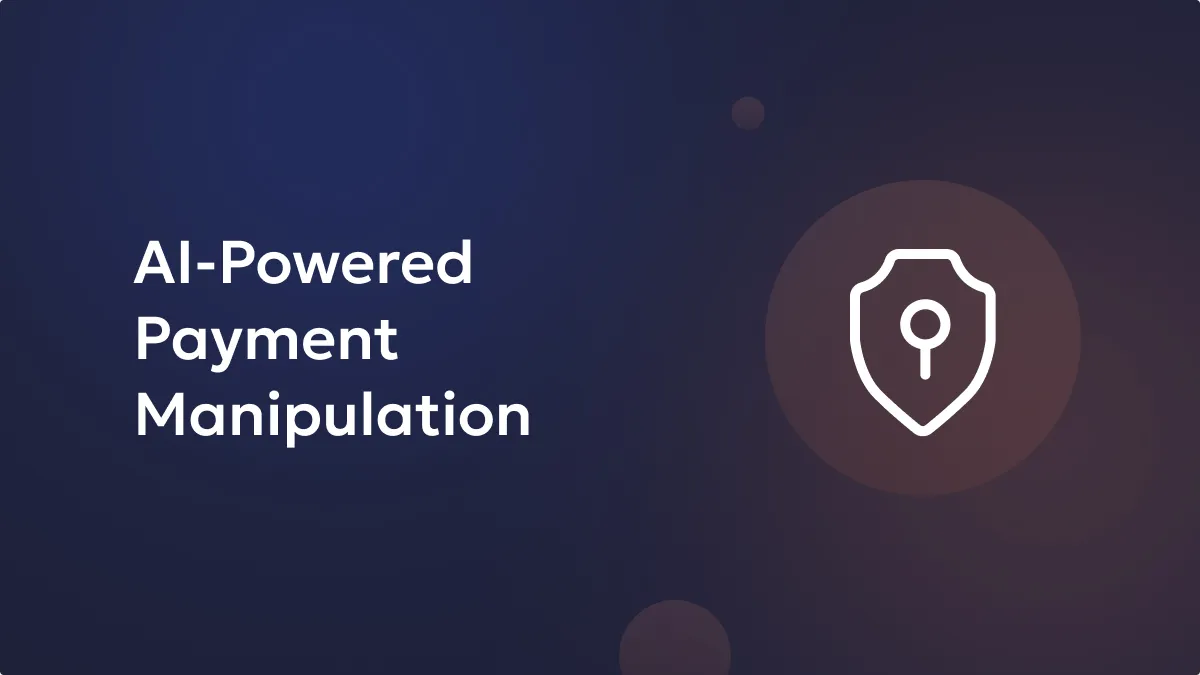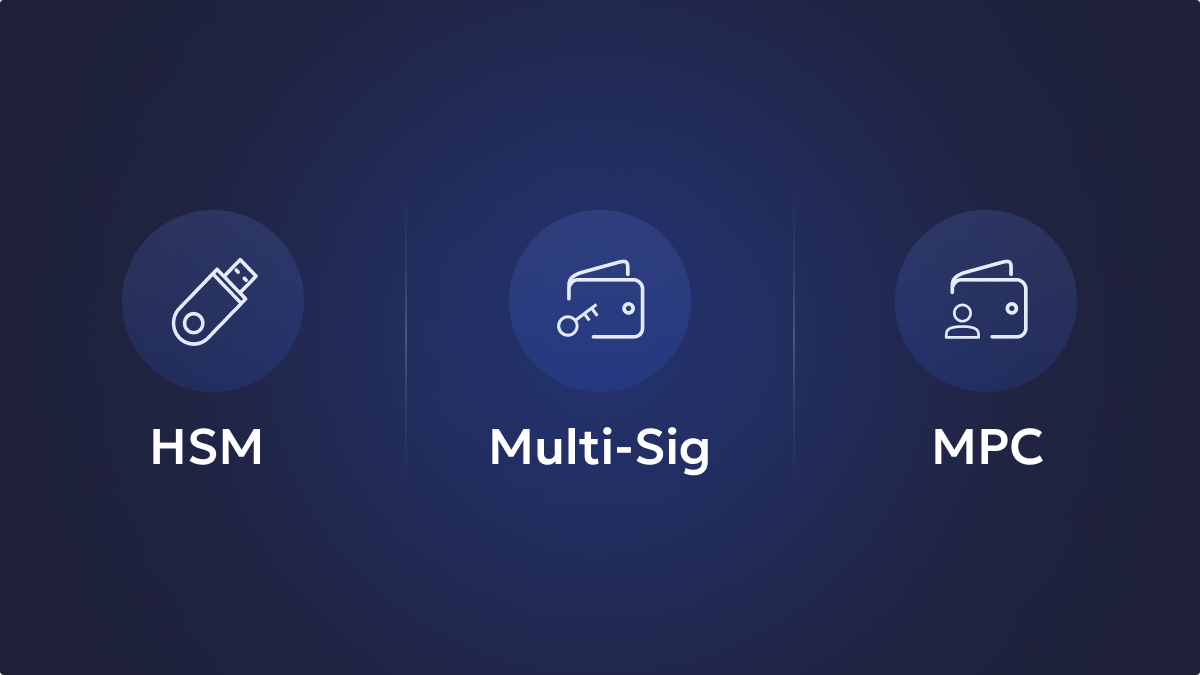Digital assets refer to any form of electronic content or web resources that possess inherent value and can be owned or controlled by individuals or organizations. Traditional digital assets include items such as digital music files, e-books and digital arts. With the advent of blockchains, digital assets have evolved into more sophisticated forms, including cryptocurrencies, non-fungible tokens (NFTs), and complicated financial instruments that reside on decentralized networks or distributed ledgers.
As new forms of digital valuables gain widespread acceptance, the demand for secure and reliable storage and crypto treasury management solutions has become paramount. This is where digital asset custody services play a pivotal role, constituting a crucial element within the digital economy’s infrastructure. Here, we explore key concepts of digital asset custody, including the various digital asset wallet types and the role of digital asset custodians, to help you navigate this burgeoning industry with ease and confidence.
What is Digital asset custody?
Central to the concept of digital asset custody is the notion of a wallet, which serves as the repository for an asset owner’s cryptographic keys. At its core, all wallets store two types of keys: private and public. These keys work together to ensure the secure execution of each transaction, such as a cryptocurrency purchase.
Unlock the potential of digital assets for your institution
Private keys are essentially large, randomly generated numbers that serve as proof of ownership for a digital asset. They come into play when transferring assets to others or when spending cryptocurrencies. To validate each transaction, the owner digitally signs it with their private key stored in their self custody wallets. It is of utmost importance that private keys remain absolutely confidential, as sharing them can potentially lead to the transfer of funds to another party.
Public keys, on the other hand, are also significantly large numbers that play a role in transactions. Unlike private keys, public keys can be shared openly. These public keys are used to generate a deposit address for the owner’s custody wallet. When assets are transferred between owners, deposit addresses are shared to determine the destination of the assets.
Categories of digital asset custody
Digital asset custody services typically fall into two categories: self-custody and custody services.
Self custody crypto wallets, a fundamental and often celebrated feature in the world of cryptocurrencies, empowers individuals to autonomously manage their digital assets. While third-party providers can assist in this process through polygon matic wallet or multisignature wallet services and hardware solutions or cold storage wallet solutions, ultimate responsibility and control reside with the individual.
Secure and manage your digital assets with Liminal
In contrast, custody or crypto treasury management services offer a custodial experience akin to traditional asset management. For asset managers and advisors, custody services tend to be the preferred choice due to regulatory compliance, risk management, technical proficiency, and adherence to best practices. Unlike the best self custody wallet, these custody service providers oversee asset transfers, settlement times, and security. However, the absence of standardized regulations poses a challenge for advisors in this field.
Choosing a custody solution: A recommended framework
Though not exhaustive, the following provides a broad overview of a standard assessment framework.
Regulatory considerations
Custodianship of digital assets carries its own set of legal responsibilities. In jurisdictions like the United States, registered investment advisors are obligated to engage “qualified digital asset custodians.” Although the precise criteria for this classification in the context of digital assets remain somewhat ambiguous, this requirement tends to benefit digital asset custody platforms subject to more comprehensive regulations. On a global scale, licensing and regulatory prerequisites can exhibit significant disparities, with some nations not mandating licensing at all.
Given the ongoing development of digital asset regulations in the United States and around the world, collaborating with custodians and providers of wallets for cryptocurrency that adhere to well-defined regulatory standards and possess robust internal frameworks serves as a safeguard against fraudulent activities and reinforces the integrity of business operations.
Transparency measures
Digital asset custody services are expected to provide a certain degree of transparency. Are they conducting thorough audits, not only on their financial records but also on their IT infrastructure, risk management procedures, and information security protocols? Blockchain-based custody solutions have the potential to enhance transparency through technologies like “proof of reserves,” which can help reduce the risk of fraud and irresponsible financial practices. “Proof of reserves” allows companies to demonstrate to all stakeholders that customer-pledged assets are securely held.
While on-chain commitments can be readily verified for transparency, off-chain commitments necessitate additional scrutiny. Consequently, additional measures, such as audits, become imperative to ensure that companies are not involved in unauthorized rehypothecation, commingling, or off-chain pledging of assets.
Compatibility with investment strategy
At times, there may be uncertainty regarding a crypto treasury management and digital asset custodian’s ability to effectively safeguard the assets required to underpin the investment strategy. This uncertainty often arises due to technological constraints and regulatory limitations, leading digital asset custody platforms to offer support for varying asset combinations. To mitigate potential issues, obtaining explicit assurances about all pertinent assets can obviate the necessity for engaging multiple custodians.
In many cases, high-frequency trading strategies and permissionless DeFi activities are not within the purview of providers subject to stricter regulations. It’s essential to recognize that the compatibility between an advisor and a custodian operates as a mutual consideration. The custodian must possess the capability to facilitate the execution of the advisor’s strategy, necessitating alignment across elements such as strategy, market access (execution and trade settlement), custody, and the associated reporting when fostering institutional relationships.
Be deliberate in due diligence
Digital asset custody is a multifaceted undertaking. While here, we’ve presented a foundational framework, the practical execution involves a range of technical factors, including organizational structure and private key management. Selecting the ideal digital asset custody services demands meticulous scrutiny of regulatory compliance, security protocols, and transparency practices. Nevertheless, with due diligence and adequate resources, digital asset custody with polygon matic wallet, multisignature wallet, defi wallet and cold wallet crypto support can deliver heightened safety, transparency, and cost-efficiency compared to conventional custody models.
Importance of custody wallet solutions for Institutions
Institutional investors have a compelling need for custodial services with the best self custody wallet support, primarily driven by the imperatives of risk reduction and regulatory compliance.
By segregating the entity responsible for asset storage from the entity entrusted with asset management, financial institutions can focus on their core competencies. This demarcation also mitigates the risk associated with a single individual having access to all the assets. Typically, custodians with digital asset wallet support are well-established financial institutions that bear a significant reputation risk, thereby ensuring alignment with their clients’ best interests.
Regarding regulatory considerations, leading global regulatory bodies such as the United States Securities and Exchange Commission (SEC), the United Kingdom’s Financial Conduct Authority, and the Monetary Authority of Singapore, among others, mandate that institutional investors hold customer funds with regulated custodians. These regulated custodians with self custody crypto holding support are typically broker-dealers or banks.
Types of Custody Solutions
Custodial Wallets
To grasp the functionality of a custodial wallet, it’s essential to begin with an understanding of how cryptocurrency wallets operate. Cryptocurrency wallets don’t actually store a user’s funds; instead, they house the public key for conducting transactions and the private key, which authorizes transactions.
As the name implies, a custody wallet involves a third party assuming custody of users’ private keys. This third party takes on full responsibility for managing the user’s digital asset wallet key, signing transactions, and safeguarding the user’s cryptocurrency assets.
Typically, custodial wallets are accessible through cryptocurrency exchanges or specialized custodial wallet providers in the form of mobile or web applications. When users access their wallet accounts, they utilize the interface provided by the wallet provider to oversee their funds and execute transactions.
In this arrangement, users place their trust in the service provider to securely store their tokens and implement robust security measures to prevent unauthorized access. These protective measures may encompass two-factor authentication (2FA), email verification, and biometric authentication methods such as facial recognition or fingerprint verification.
Non-custodial Wallets (Self-Custody)
A non-custodial wallet, often referred to as a self custody wallet, places the responsibility for managing one’s own crypto funds squarely on the owner. In this setup, the user exercises full authority over their cryptocurrency holdings, oversees their private key, and autonomously conducts transactions.
Non-custodial wallets or self custody crypto wallets come in various formats. Browser-based wallets, for instance, function as browser extensions, enabling users to input their private key and initiate transactions. Mobile wallets are downloadable mobile applications designed for this purpose. On the other hand, hardware wallets are physical devices, favored by many for their enhanced security, as they can be used and managed offline.
Non-custodial wallets assign users with a crucial seed phrase. During single-sig, multi-signature wallet or cold wallet crypto wallet creation, users are prompted to note and safeguard a set of 12 randomly generated words, commonly referred to as a ‘recovery,’ ‘seed,’ or ‘mnemonic’ phrase. This phrase serves as the foundation for generating both public and private keys and serves as a backup or recovery mechanism in the event that users lose access to their original device. It’s important to note that anyone in possession of the seed phrase can gain full control over the funds held in the user’s wallets for cryptocurrency storage. If the seed phrase is ever lost, the user faces the risk of losing access to their funds.
The user assumes responsibility for managing and executing each transaction. Private keys are essential for sending funds and completing other transaction activities. Depending on the specific non-custodial wallet or the best self custody wallet in use, transactions can either be immediately reflected on the blockchain or signed offline and subsequently uploaded to the blockchain for confirmation at a later time.
Assessing Custody Solutions
To begin, it’s important to note that cryptocurrencies function as bearer assets, meaning that the individual who has control over the asset is its rightful owner. In essence, if you were to lose your Bitcoin/ Ethereum or if it were stolen, there are no recourse options to recover the funds, unlike a bank account or credit card, where a bank can reverse a transaction.
Many retail investors typically store their Bitcoin on exchanges or in hot wallets, which unfortunately have a history of security breaches. This approach may not be suitable for professional investors. Some savvy retail investors opt for hardware wallets, which allow the secure offline storage of Bitcoin private keys, providing a significantly higher level of security compared to exchanges.
However, from the perspective of institutional investors, relying on a single USB hardware device still presents certain risks, such as the potential for an employee to abscond with the hardware wallet containing all the funds. In this context, a more robust strategy involves separating authority to prevent any individual from acting in a rogue manner.
The cryptocurrency and digital asset custody industry is evolving rapidly, but it remains relatively immature and inexperienced compared to traditional finance. To encourage major financial institutions to consider investments in Bitcoin, the custody aspect needs to be addressed comprehensively. In addition to digital asset custody solutions, investors also require insurance products that safeguard Bitcoin and other cryptocurrencies against theft.
Challenges in setting secure custody wallet operations for institutions.
Experienced investors require compliant cold storage wallet solutions and insurance coverage from well-established, reputable companies. While numerous native crypto custody options exist, they may not fully satisfy the requirements of the largest financial players.
While most digital asset custody services have garnered success within their scope, they primarily cater to smaller, forward-thinking capital allocators. Nevertheless, most major institutional players have yet to fully engage in this arena.
Encouragingly, prominent financial institutions have started venturing into the digital asset custody services domain. For example, Fidelity introduced its institutional custody solution in mid-2019. It remains too early to ascertain the full impact on the market, but the involvement of a traditional financial institution in the custody of Bitcoin represents a promising development.
FAQ
What is the main reason why blockchain is very popular in the financial sector?
Blockchain technology has streamlined the error-handling and reconciliation processes for banks, enabling faster transaction tracing and more timely error identification. This empowers them to detect and rectify errors prior to transaction completion.
How can blockchain change the banking industry?
Blockchain technology has revolutionized the banking and financial services sector by eliminating the requirement for intermediaries in the lending and credit industry. It has enhanced the security of borrowing money and facilitated the provision of lower interest rates. Additionally, blockchain has transformed trade finance by replacing cumbersome paper-based processes.
How does the impact of the blockchain go beyond financial services?
Within the world of blockchain, trust is not reliant on influential intermediaries such as banks, governments, or technology corporations. Instead, it is established through widespread collaboration and sophisticated code. Blockchains are a guarantor of integrity and trust even among individuals who are unfamiliar with each other, making it considerably challenging to engage in dishonest practices.
What is the impact of blockchain technology on accounting and finance?
Blockchain technology has the potential to optimize numerous labor-intensive and time-consuming procedures within financial transactions. Specifically, it can automate the recording and reconciliation of transactions, diminishing the necessity for human involvement and potentially eradicating errors or discrepancies.
What is the importance of Blockchain technology to financial reporting?
Blockchain technology offers an unalterable and distributed ledger system, ensuring transparency and security in transactions. In the field of accounting, this implies that each financial transaction can be documented on the blockchain, establishing a clear and auditable data trail.
What is the impact of Fintech and blockchain technologies on banking and financial services?
The incorporation of blockchain and digital asset wallet technology in banking holds the potential to enhance transparency and efficiency by diminishing the requirement for intermediaries like clearinghouses, auditors, and reconciliation agents. This shift would lead to quicker and more cost-effective transactions.






